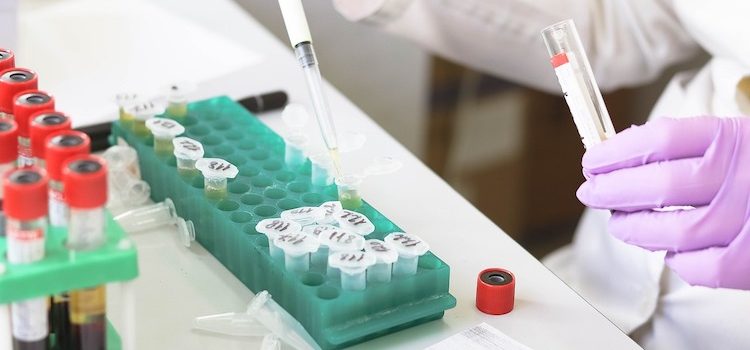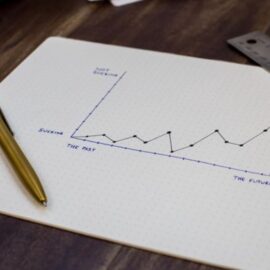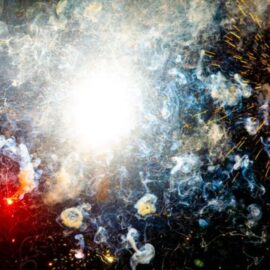

This article is an excerpt from the Shortform book guide to "A Brief History of Time" by Stephen Hawking. Shortform has the world's best summaries and analyses of books you should be reading.
Like this article? Sign up for a free trial here .
What makes a good theory? What are some things you should consider when evaluating a scientific theory?
Not all scientific theories are created equal. In his book A Brief History of Time, Stephen Hawking outlines three characteristics of a good theory. A good theory is one that is testable, consistent with past observations, and able to predict future observations.
Lets’ explore each one in turn.
Characteristics of a Good Scientific Theory
Hawking’s commentary on the scientific process is basically a discussion on what makes a good theory. Hawking highlights three characteristics that he says make a good scientific theory:
1. A good theory is consistent with past observations. It should apply to a broad range of circumstances, with as few exceptions or qualifiers as possible. General relativity and quantum mechanics are examples of theories that apply to a wide variety of situations with very few exceptions. Specifically, the theory of general relativity can model the behavior of any set of large-scale objects interacting with gravitational forces. Similarly, quantum mechanics can model the behavior of all kinds of subatomic particles interacting through electromagnetism and nuclear forces. The one exception where these theories can’t be used is when so much mass is concentrated in such a small space that you have to model gravitational interactions and nuclear interactions at the same time.
2. A good theory will correctly predict future observations. A theory that doesn’t allow you to make predictions isn’t useful. And if its predictions aren’t accurate, then the theory is probably wrong.
3. A good theory can be tested. If the theory is wrong, you should be able to prove that it’s wrong by showing that its predictions are inconsistent with observable reality. Hawking emphasizes that even one clear example of the theory failing is enough to disprove it. On the other hand, he says it’s generally impossible to prove that a theory is correct, because there could always be some exception that just hasn’t been discovered yet. Nevertheless, the more a theory has been tested and found to agree with observations, the more you can trust that it’s at least approximately correct.
| The Scientific Method For background, let’s consider an overview of the scientific method, a six-step process that often leads to the creation of new scientific theories. Step 1: Observe the world. Science is the study of the natural world. Step 2: Ask a question. This question serves to focus your study on explaining some aspect of the natural world. Step 3: Develop a hypothesis, or in some cases multiple hypotheses. Each hypothesis is a tentative answer to your question, based on your observations. Step 4: Test your hypothesis (or each of your hypotheses). Typically, you test a hypothesis by using it to make predictions. If your hypothesis is true, what does it imply about the natural world? What would you expect to observe if your hypothesis is true? Then you set up an experiment or make additional observations to see if they are consistent with your predictions. Step 5: Analyze the results. Did your observations match your predictions? If not, go back to step three and modify your hypothesis or come up with a different one. Step 6: If your hypothesis did allow you to make accurate predictions, continue testing it, and have other people test it to corroborate your results. A hypothesis that has been extensively tested and is widely accepted by the scientific community is called a theory. Historically, what we now call a “theory” was called a “law of nature,” “law of physics,” or just a “law,” so today the terms “law” and “theory” are functionally synonymous. However, there is no universal standard for just how extensively tested and how widely accepted a hypothesis has to be before it’s considered a theory. Thus, be aware that some people apply the term “theory” to a published hypothesis much sooner than others do. Also note that sometimes theories (and laws) achieve wide acceptance for a time, but later get disproven. This is where Hawking’s advice on qualities of a good theory comes to bear. If a theory is only accepted as applicable in certain cases because it can’t explain all the existing observations, or if new observations disagree with its predictions, then this implies that it doesn’t provide a very accurate description of the natural world. Similarly, if a theory can’t be tested because it doesn’t allow you to make predictions, then there’s no way of knowing if it’s accurate or not. |

———End of Preview———
Like what you just read? Read the rest of the world's best book summary and analysis of Stephen Hawking's "A Brief History of Time" at Shortform .
Here's what you'll find in our full A Brief History of Time summary :
- The search for a theory that explains the history and evolution of our universe
- Stephen Hawking's discussions about time, space, dimensions, and quantum theory
- How time travel would theoretically work







I have proof we have proven Edwin Abbotts theory of
Flatland!!! History and much more we can show this theory is true